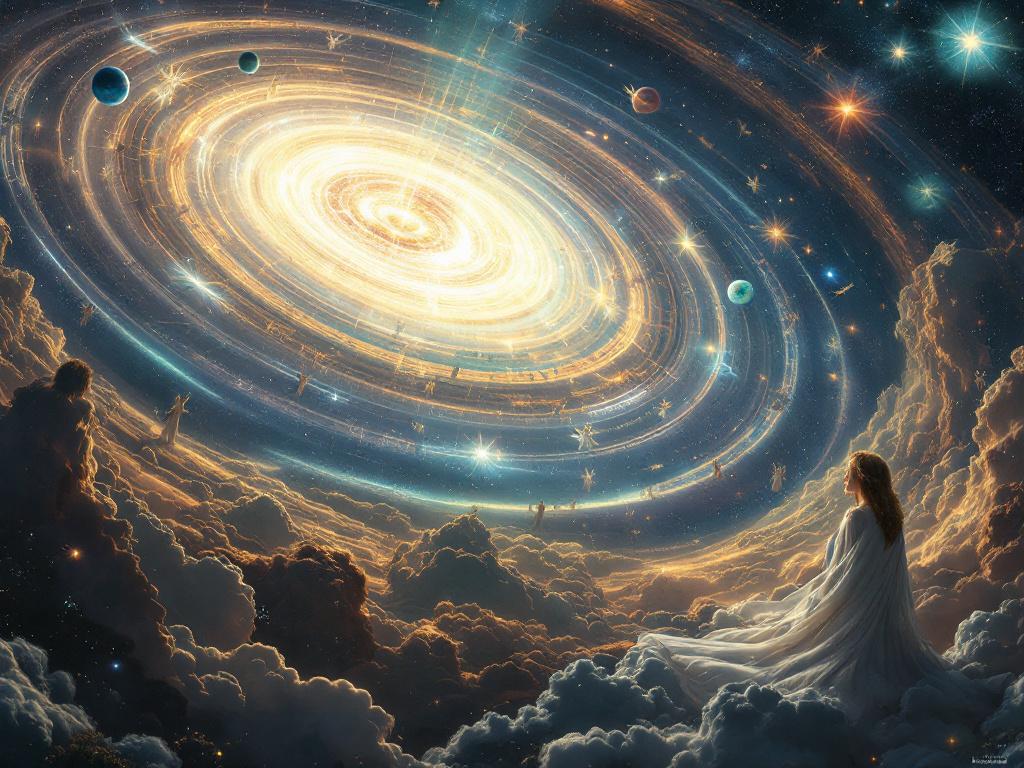Introduction
There are books you read with your eyes, and then there are books you read with a mix of awe, confusion, and silent reverence. The Urantia Book is one of those. When I first encountered it, I wasn’t sure if I was opening a volume of theological science fiction, a parallel Bible, or the product of a visionary mind. Every page seemed to stretch my conceptual horizon, yet never demanded blind faith.
This article is not a profession of belief, nor a harsh critique. It’s an attempt to explore a work that refuses categorization and continues to provoke questions long after the last page is turned. And in a world starved for certainty, perhaps that’s its greatest strength.
The Book That Came from Nowhere
It has no author. No traditional publisher. Not even a clear origin. Yet since 1955, The Urantia Book has been one of the most discussed (and ignored) texts in contemporary spiritual literature. Published by the Urantia Foundation in Chicago, the book claims to be a cosmic revelation received from “celestial beings” and transcribed through a mysterious “sleeping subject” during the 1930s and 40s.
Though it reads like it was penned by a mystical science fiction writer, the book asserts it has no human authors: each chapter was supposedly dictated by higher-level spiritual entities. The result? A 2,000+ page tome that spans cosmology, the history of Earth, and a highly detailed, alternate biography of Jesus.
The Cosmology of Urantia: Universes within Universes
The book paints a layered cosmos made up of seven superuniverses revolving around a perfect central universe called Havona, whose center is Paradise, the dwelling of the Universal Father. Angelic beings, Creator Sons, spiritual orders, and intermediate hierarchies inhabit this colossal structure.
Our local universe is called Nebadon, ruled by a Creator Son named Michael of Nebadon. The name may not ring a bell—until you learn his human incarnation: Jesus of Nazareth.
Urantia: Earth Through Angelic Eyes
Earth, in the book, is named Urantia. And it's portrayed as both a special and troubled planet. According to the text, Urantia was one of the worlds struck by a Luciferian rebellion in ancient times, severing its spiritual communication with the central universe. This cosmic disconnection allegedly slowed the spiritual evolution of human civilization.
The book recounts human history from a radically different angle: it tells of the emergence of human races, the arrival of Adam and Eve as genetic uplifters, and the development of civilizations under the (often disastrous) influence of fallen spiritual beings.
Jesus According to Urantia: The Man Who Knew He Was God
The fourth section of the book is entirely devoted to the life and teachings of Jesus. But this is no standard gospel account. Here, Jesus is fully aware of his divine and cosmic nature: he is Michael of Nebadon, a Creator Son who chose Earth as the stage for his final incarnation.
The book adds numerous details about his childhood, adolescence, and travels, portraying him as both an enlightened teacher and the direct emanation of the Universal Father. Episodes missing from the canonical gospels offer a deeply human, contemplative Jesus tied to cosmic dynamics beyond the grasp of his contemporaries.
Religion? Philosophy? Mystical Science Fiction?
The Urantia Book defies simple classification. It’s not strictly a religious text, though it speaks extensively of God. It’s not purely philosophy, yet it proposes a universal spiritual ethics. And it’s not just science fiction, though it describes stellar races and interdimensional journeys.
Some scholars view it as an example of “modern revelation,” others as a complex literary fabrication. Some compare it to texts like A Course in Miracles or The Law of One. Many ignore it entirely.
A Small Community for a Vast Book
Today, small Urantia reader communities exist around the world: in the United States, South America, and Europe. There's no formal cult, but rather a network of readers and spiritual thinkers who study, discuss, and seek to understand the book's message.
The Urantia Foundation continues to publish and distribute the book—including in English, Spanish, and Italian—and encourages a non-dogmatic, contemplative approach to its content.
A Text for Those Who Look Beyond
The Urantia Book doesn’t aim to convert. It challenges. It challenges readers to expand their mental borders, to imagine a universe where God is not just a father but an architect, and where human life is part of a cosmic drama still unfolding.
Perhaps it doesn’t matter where this book came from. Perhaps what matters is where it can lead us.








Leave a Comment